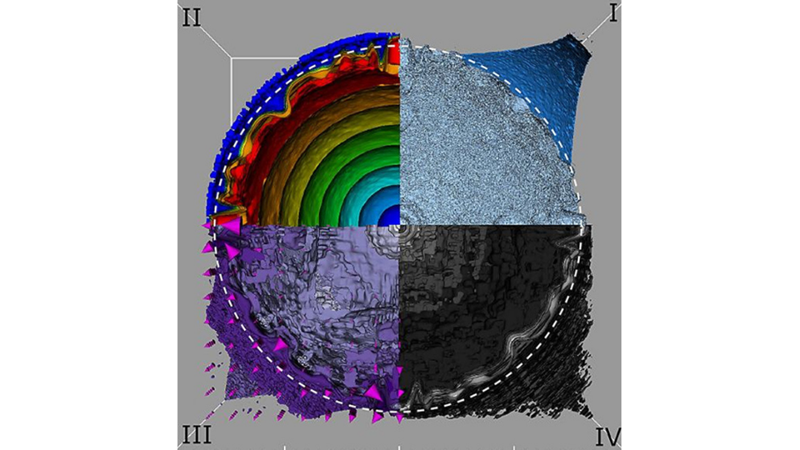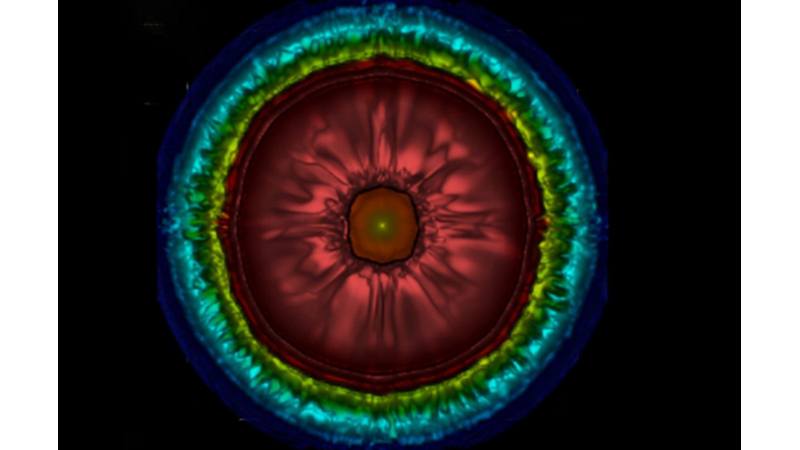When the most massive stars in the Universe run out of fuel, they explode as supernovae, collapse inwards and leave behind a neutron star, a black hole or evaporate completely.
It is difficult to understand what is happening inside the developing explosion, and this is especially true for the rarest and brightest types of stellar explosions, the so-called exotic supernovae.
To better understand the dynamics of these rare supernovae, astronomers are using powerful supercomputers to simulate the process. After years of real-world research and millions of hours of supercomputer computing time, researchers have completed the first high-resolution, 3D hydrodynamic simulation of exotic supernovae.
Ke-Jung Chen of the Academia Sinica Institute of Astronomy and Astrophysics (ASIAA) in Taiwan led an international team and utilised supercomputers at Lawrence Berkeley National Laboratory and the National Astronomical Observatory of Japan. They published their findings in The Astrophysical Journal.
Supernovae are bright and powerful explosions that mark the end of the lives of massive stars, and astronomers have a relatively comprehensive understanding of these explosions.
For example, for most supernovae their intrinsic luminosity has always been well known, and scientists have been able to build computer models of what happens during a supernova explosion.
But in recent years, large-scale observations of supernovae have revealed rare types of cosmic explosions, one that is tens to hundreds of times brighter than ordinary supernovae and another that persists for extremely long periods of time. These rare events, called exotic supernovae, challenge and upset previously established understandings of supernova physics.
Super-bright supernovae are about 100 times brighter than normal supernovae and usually only last for a few weeks to a few months.
Infinitely luminous supernovae can maintain their brightness for several years or longer. Other exotic supernovae exhibit irregular and intermittent changes in brightness.
Exotic supernova suspects are stars with masses ranging from 80 to 140 times that of the Sun. Scientists say that learning more about these unusual supernovae could be key to understanding the evolution of the most massive stars in the universe.
However, modelling what happens during these massive explosions is quite challenging, and in this new paper, Ke-Jung Chen and his team said that existing models are mostly limited to one-dimensional simulations.
Using state-of-the-art supercomputer simulations and millions of hours of computing time, the researchers were able to model how turbulent structures in the interior of an exotic supernova explosion affect the brightness and explosion structure of the entire supernova.
"Turbulence plays a critical role in the process of a supernova explosion, arising from disordered fluid motion and leading to complex dynamics," the team wrote.
"These turbulent structures stir and distort matter, affecting the release and transfer of energy, and hence the brightness and appearance of the supernova."
The team said more research is needed to better understand exotic supernovae, especially as the next generation of supernova research projects will likely detect more of these events.
The Vera Rubin Telescope in Chile is estimated to discover three to four million supernovae over a wide range of distances during its ten-year survey. In addition, wide-field near-infrared missions such as the Nancy Grace Roman Space Telescope and Euclid will reveal more of these events.
Knowing more about these events through computer simulation and modelling will help increase our understanding of the death of very massive stars.
Source: https://www.sciencealert.com/


 Nielawore
Nielawore










Yorum yazmak için lütfen giriş yapınız